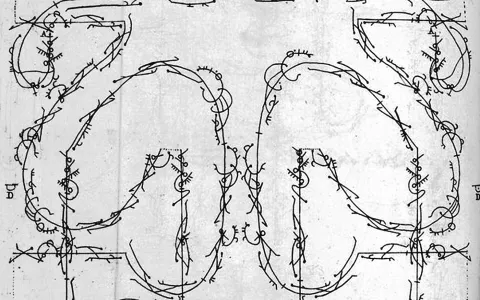Mónica Mays
A Stem I Nail is a project of sculptural formulation in which Baroque ornamentations are reconsidered as agents outside of periodisation and linear time. In its materiality and body, the Baroque comes close to proliferation, excess, the blurring of edges and deformed perspective. It crosses signs and temporalities, with an aesthetic of lament, decadence and melancholy, luxury and pleasure, erotic convulsion and allegorical pathology, reappearing as a witness to the crisis or end of modernity.
While as a movement it has always been equated with a style or period, A Stem I Nail evades this categorisation, veering rather towards a hallucinatory and symbiotic quality from its etymology of irregular pearl. Poet Lisa Robertson says that what the new ornamentations will look like is an extremely political question. Set to thinking about this issue, she takes as a case study the Manila Shawl, named after the port of Manila in the Philippines, where the Spanish colony unloaded products from Asia in the wake of three Spanish expeditions in the 18th and 19th centuries: Juan de Cuéllar's Commission in the Philippines, Alejandro Malaspina’s voyage around the world, and the Royal Philanthropic Vaccine Expedition.
These embroideries brought new species in the form of textile representations, in addition to the transfer of the species themselves: the breadfruit tree, the cinnamon tree, turmeric and pepper, among many others. The decorations of the shawl were gradually replaced by native Iberian motifs; bamboo and pagodas disappeared and rosettes and carnations took their place. Each temporal and spatial scale that this fabric has passed through has left traces in its configuration, making it a cultural melting-pot, to the point of becoming part of traditional Iberian heritage.
Revisiting this narrative allows certain implications to emerge, where European aesthetics, as the Martinican poet and philosopher Edouard Glissant comments, do not eradicate meanings but rather displace and incorporate them in a complex tandem of trans-historic languages. During the residency at Matadero, these cosmological circulations will be traced through a series of sculptures with anamorphic botanical ornamentations.
Bio
Mónica Mays lives and works in both Madrid and Amsterdam. Her practice involves sculpture, installation and performance art. Through these media she traces the circulations, agencies and economies of various objects, re-framing them as porous and generative identity processes. Her most recent work focuses on nature-culture cannibalisms, anamorphic landscapes, pre-patriarchal mythologies and the Neo-Baroque.
Having studied Cultural Anthropology at the University of New Orleans, she graduated from the École Superieure des Arts Décoratifs in Strasbourg in 2015 and received an MA from the Sandberg Instituut in Amsterdam in 2017. She has developed projects in artistic residencies such as Rupert (LT), Fundación Bilbao Arte (ES) and Landescape (IT). Her works have been exhibited in spaces such as the Frascatti Theater (NL), Centro Centro (ES), Open Tuinen Dag (NL), Industra Gallery (CZ) and Atelier Chiffonier (FR). In 2021 she has been awarded the 3PD prize bestowed by the Amsterdam Fund for the Arts and the Generation 2022 prize from the Montemadrid Foundation.

